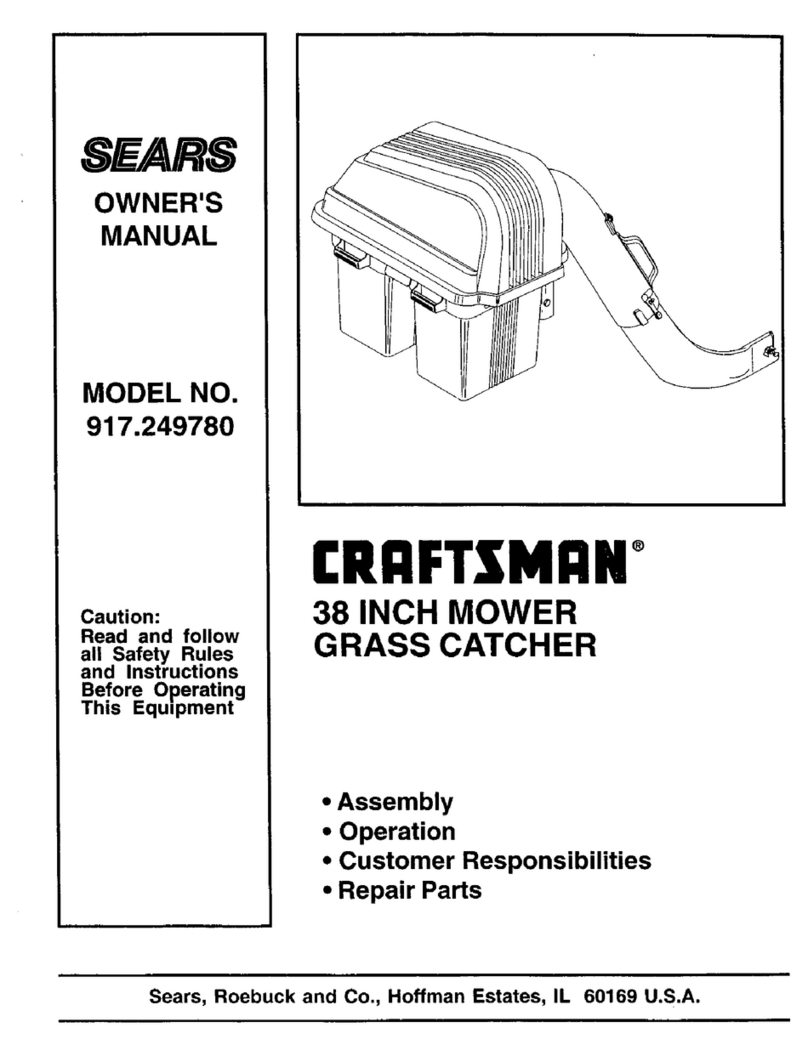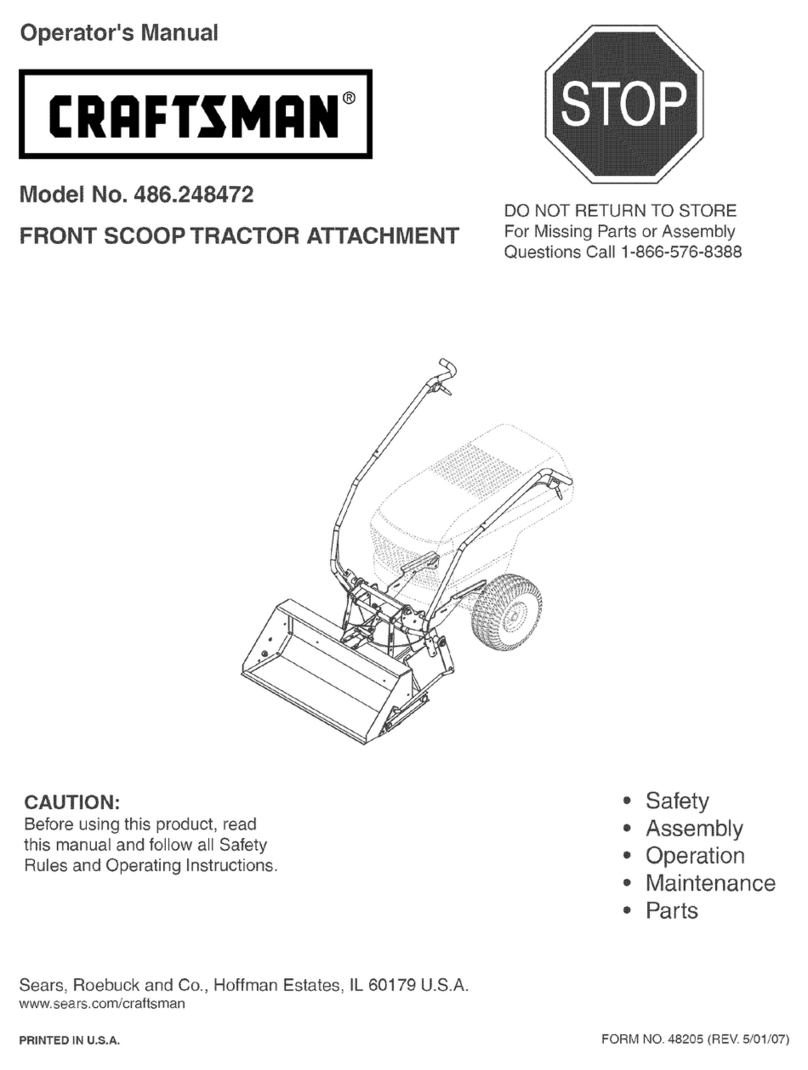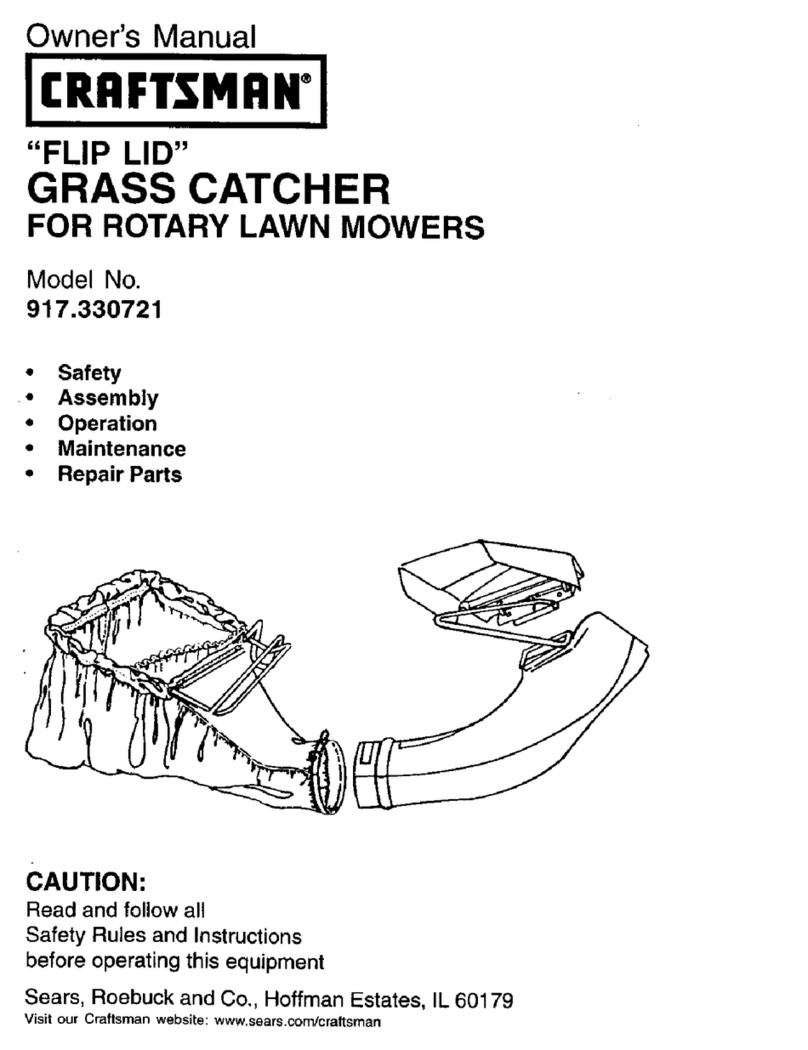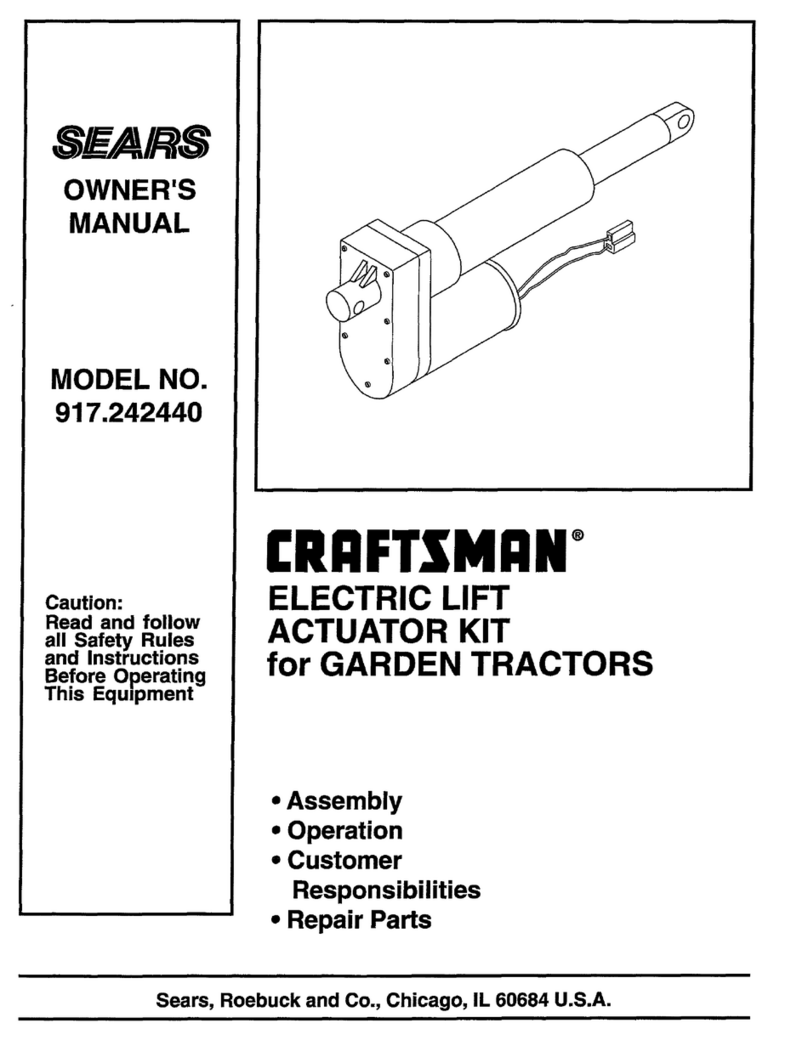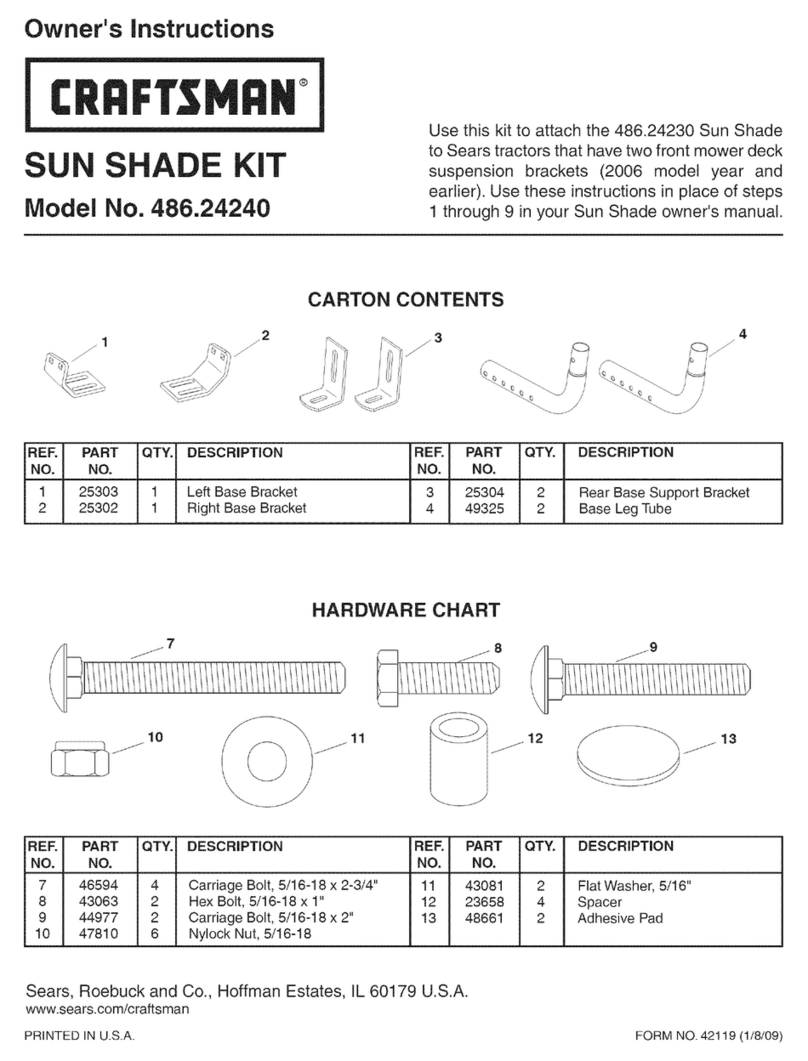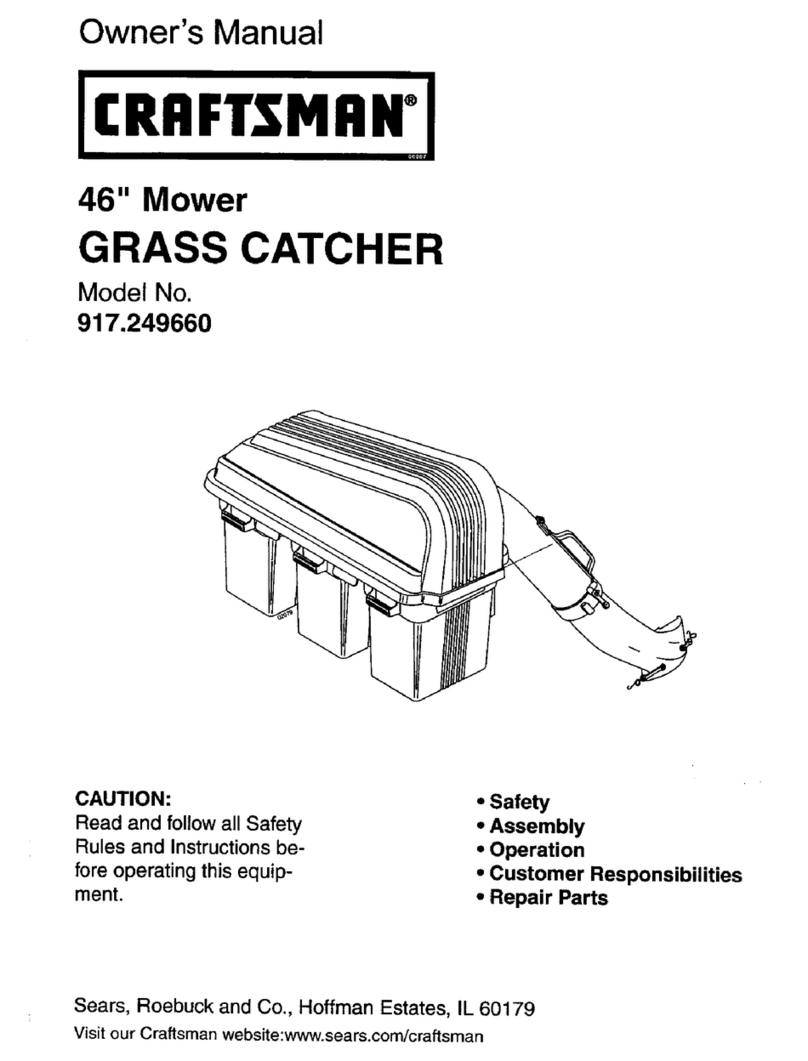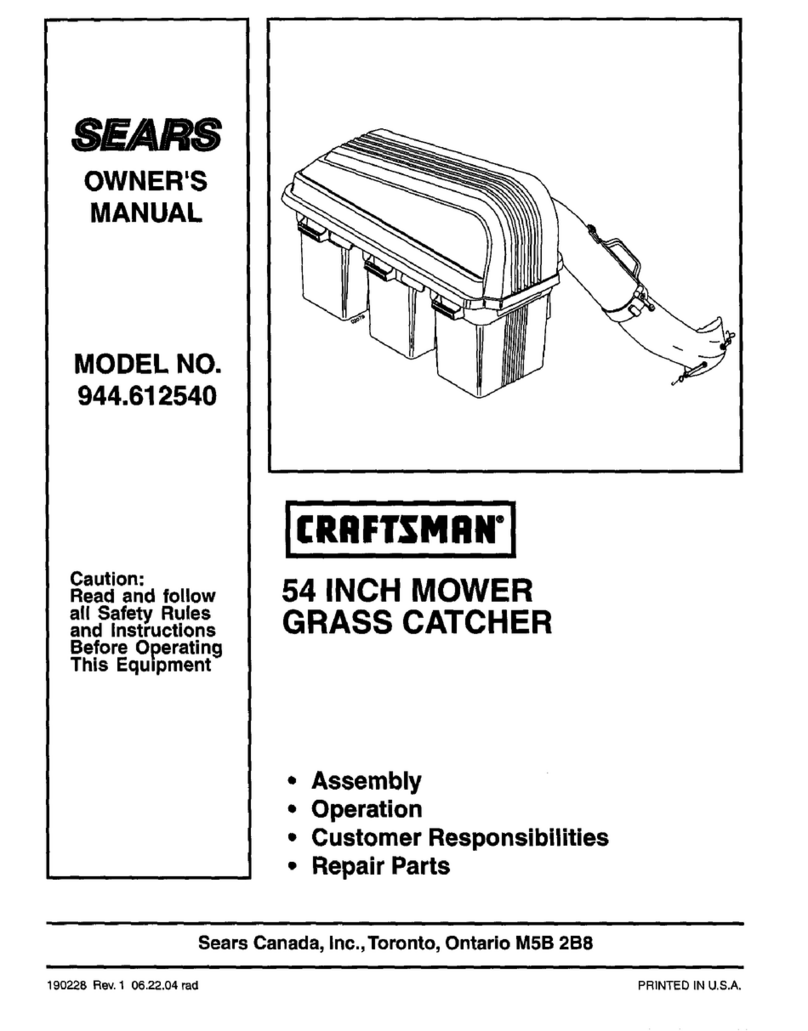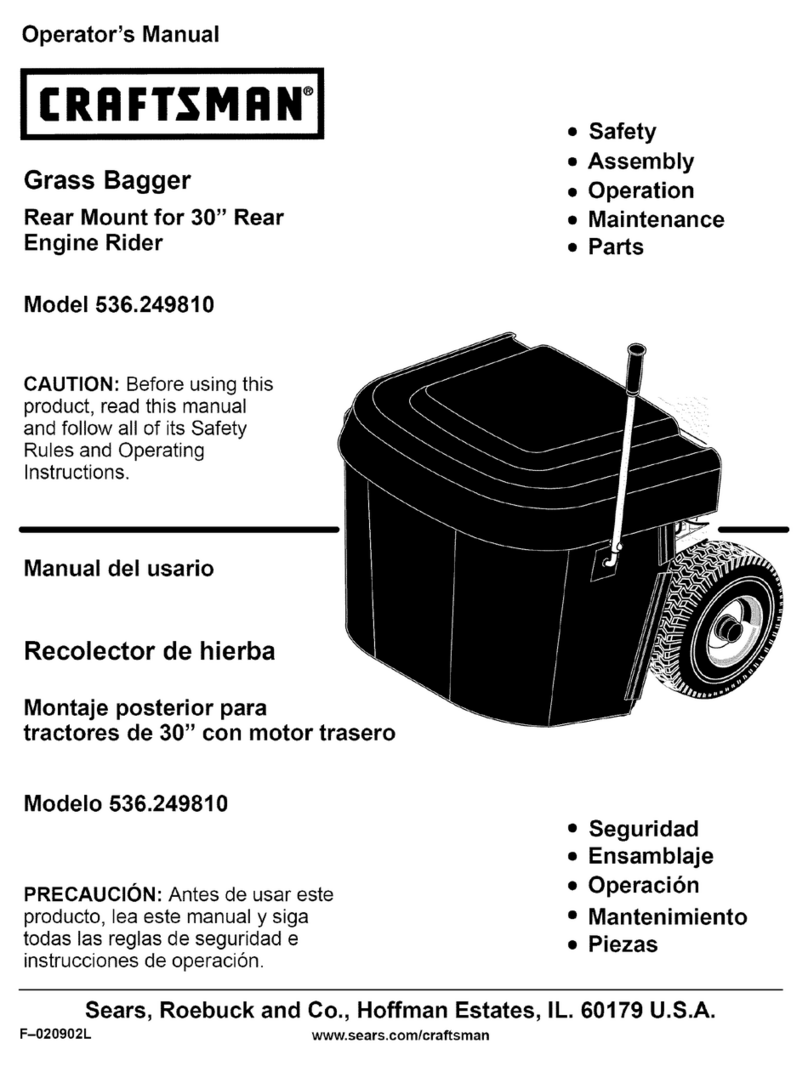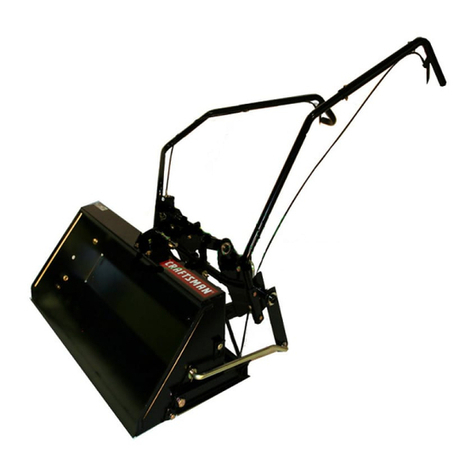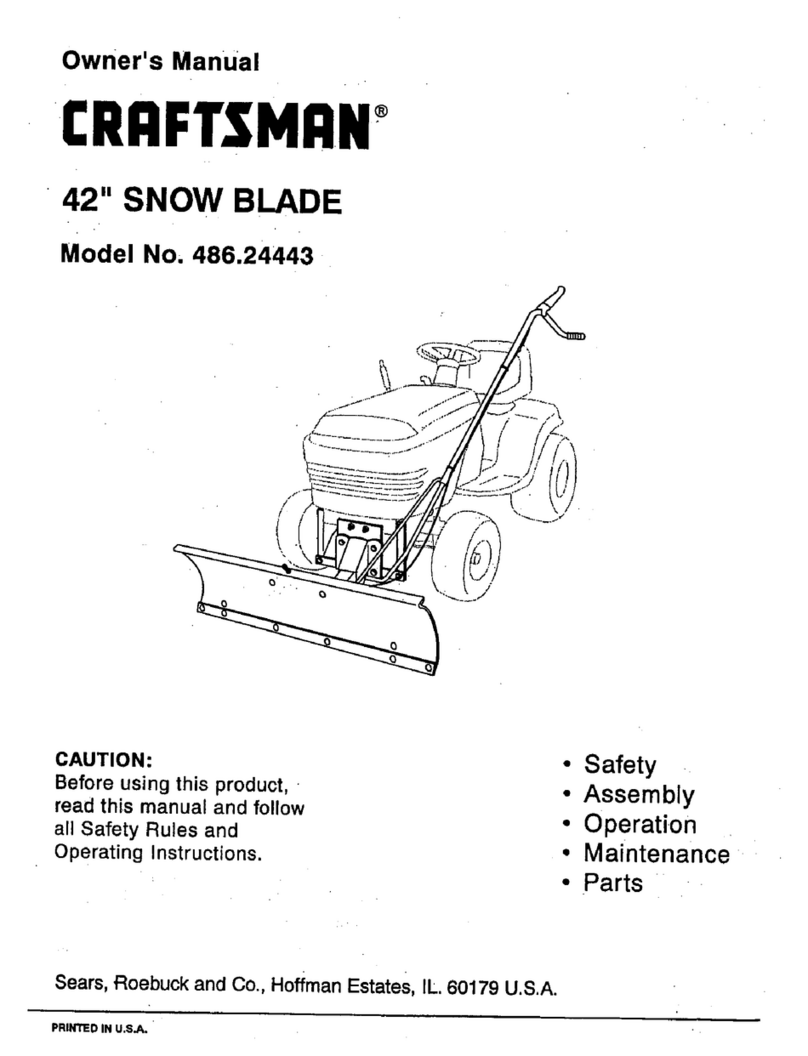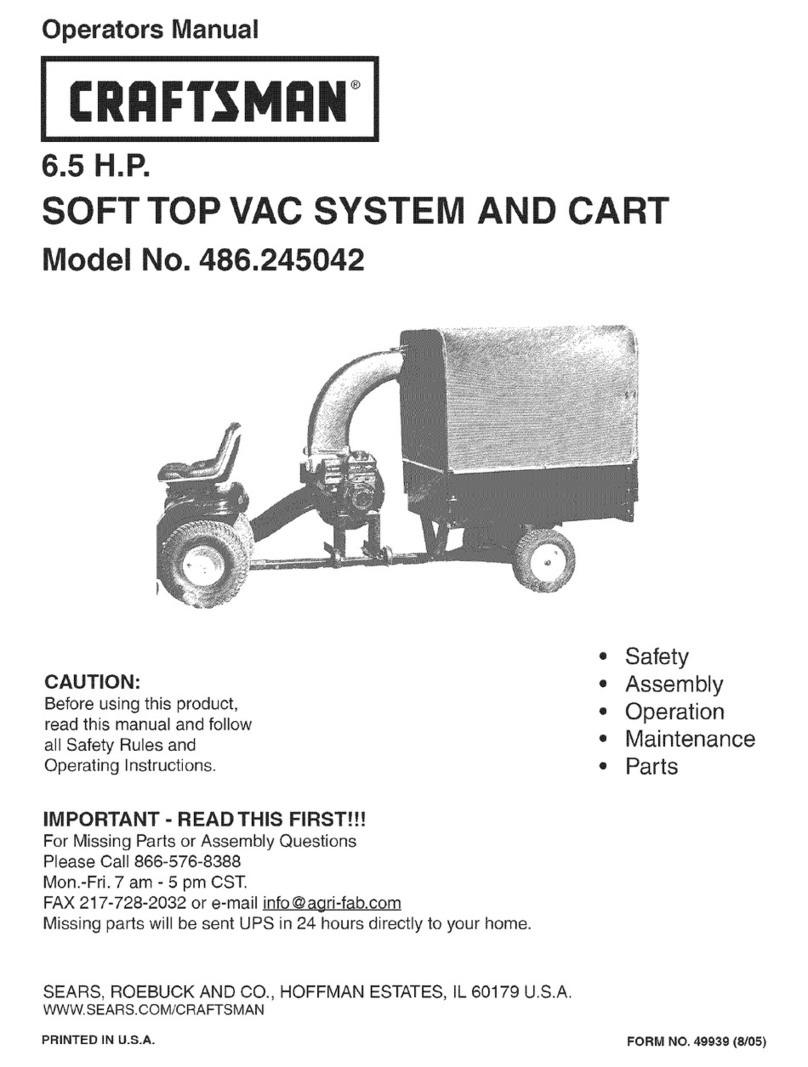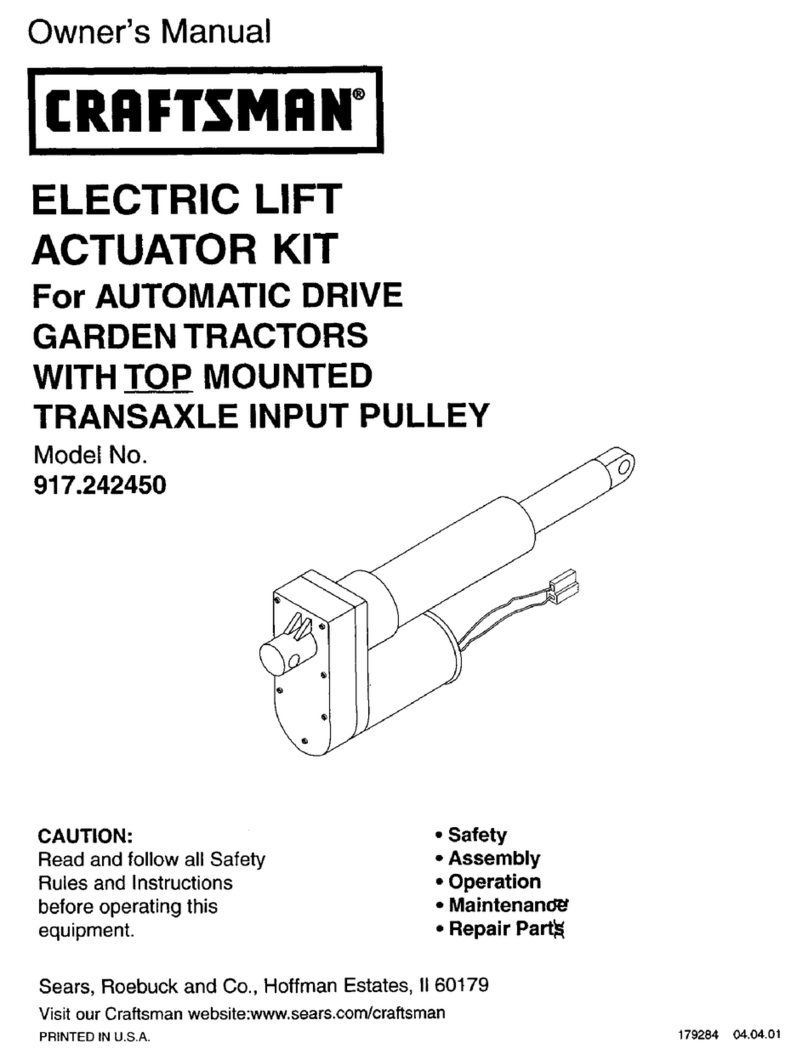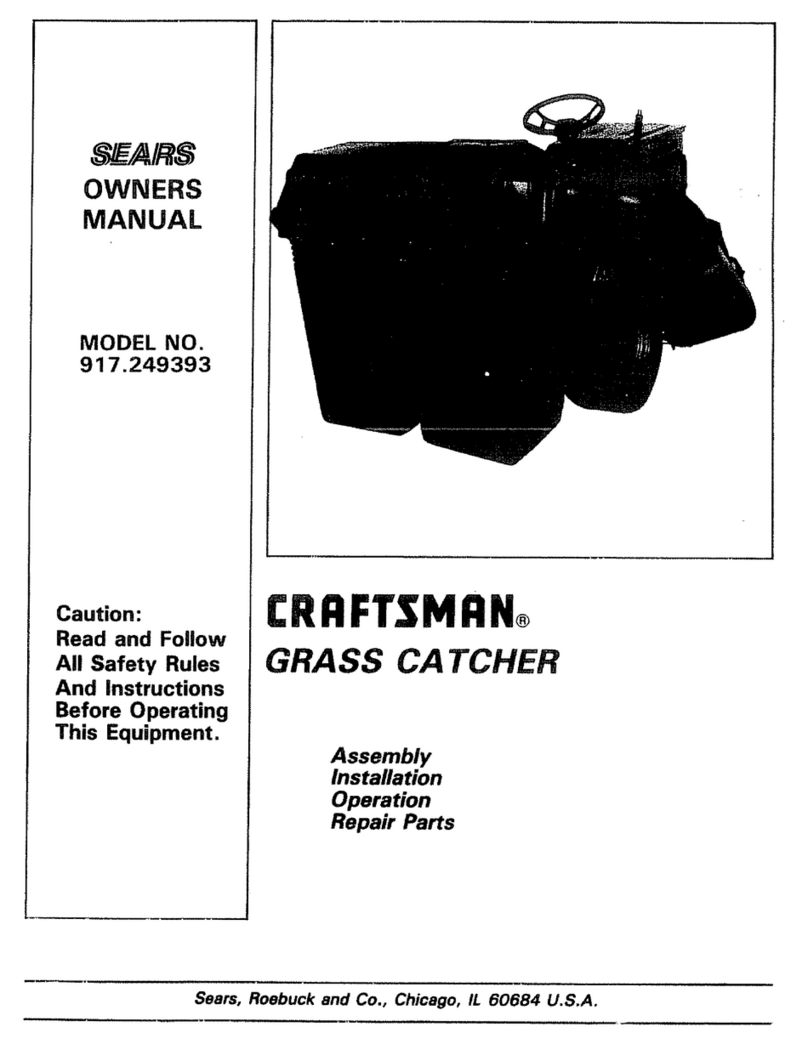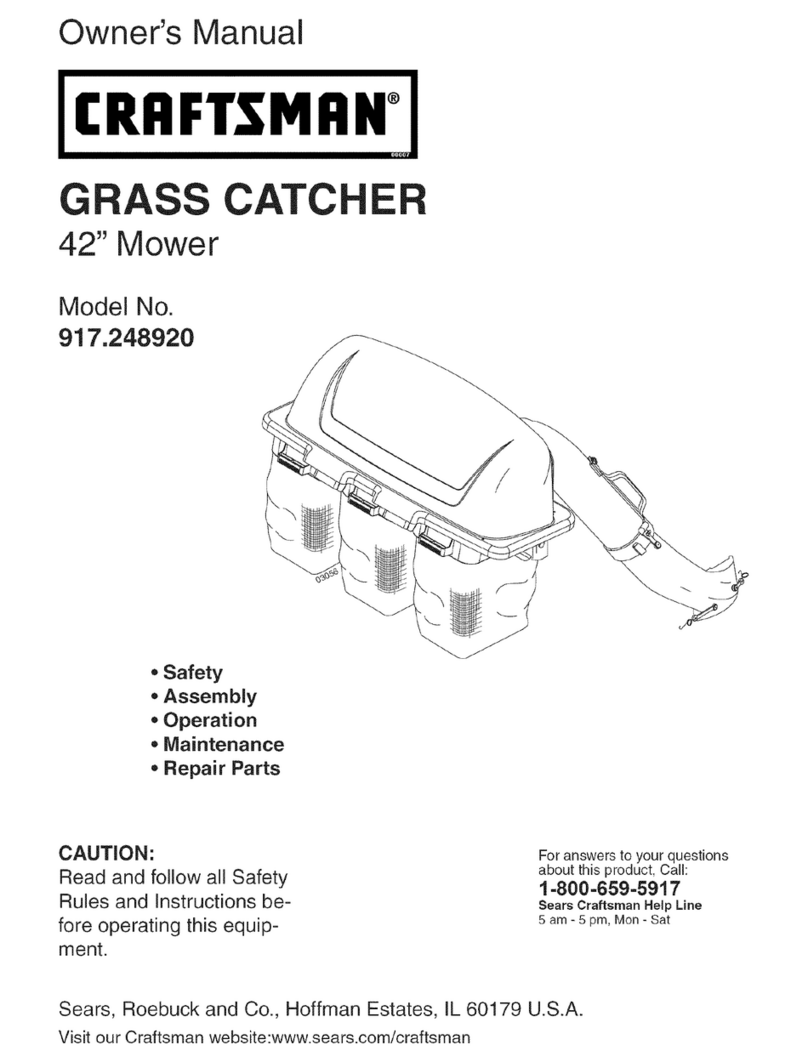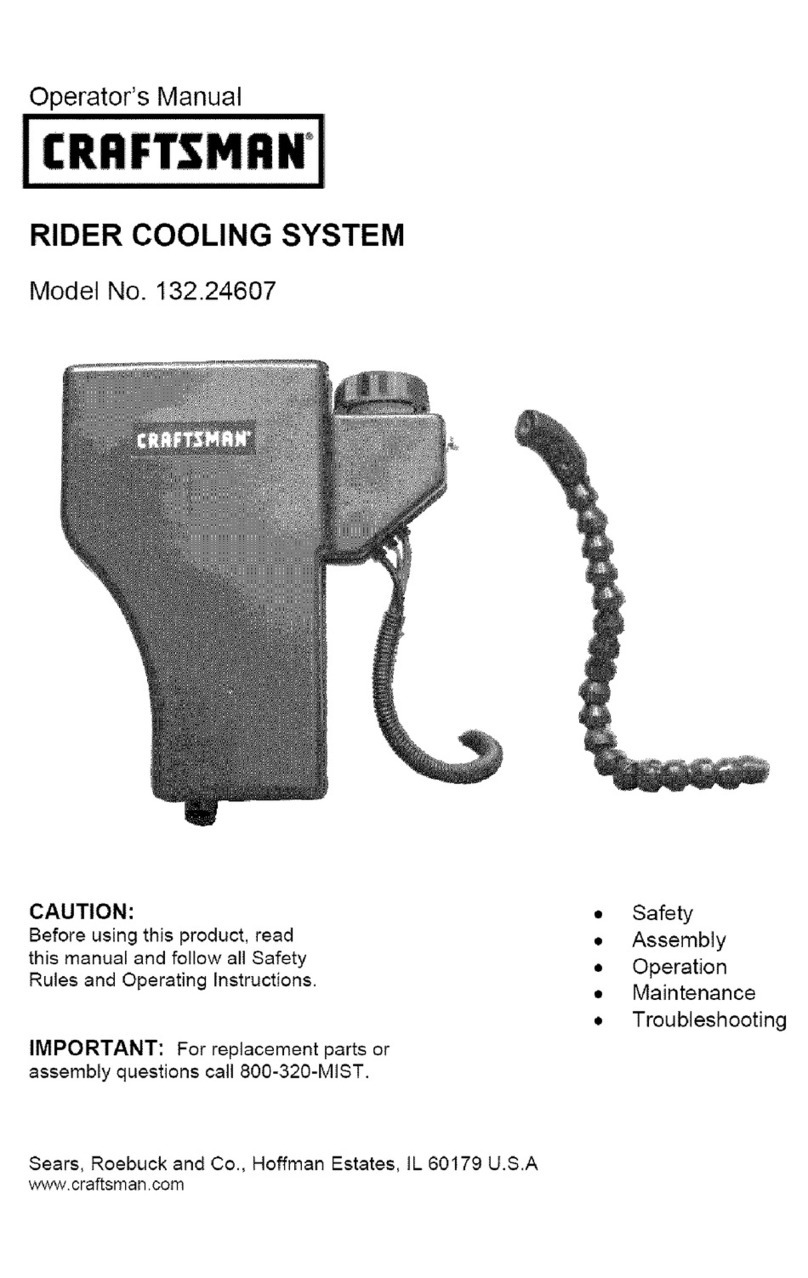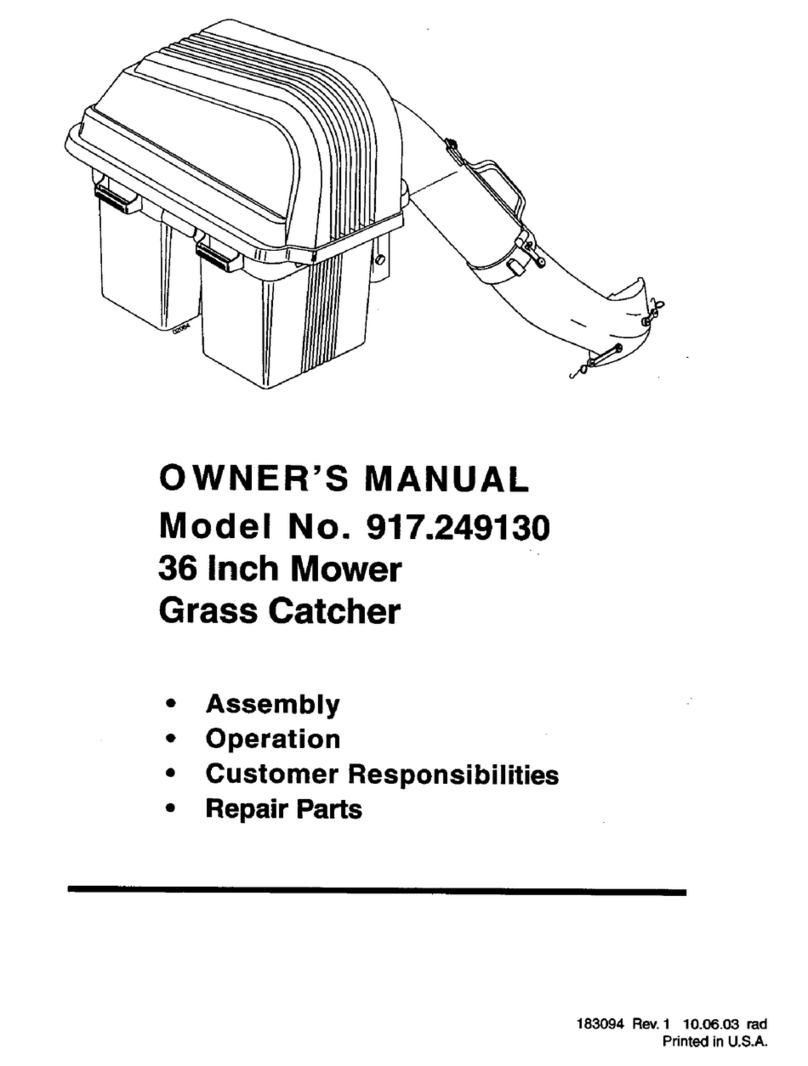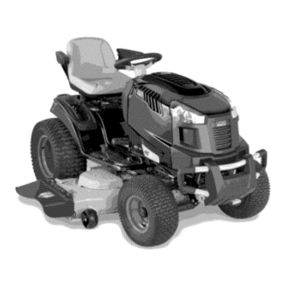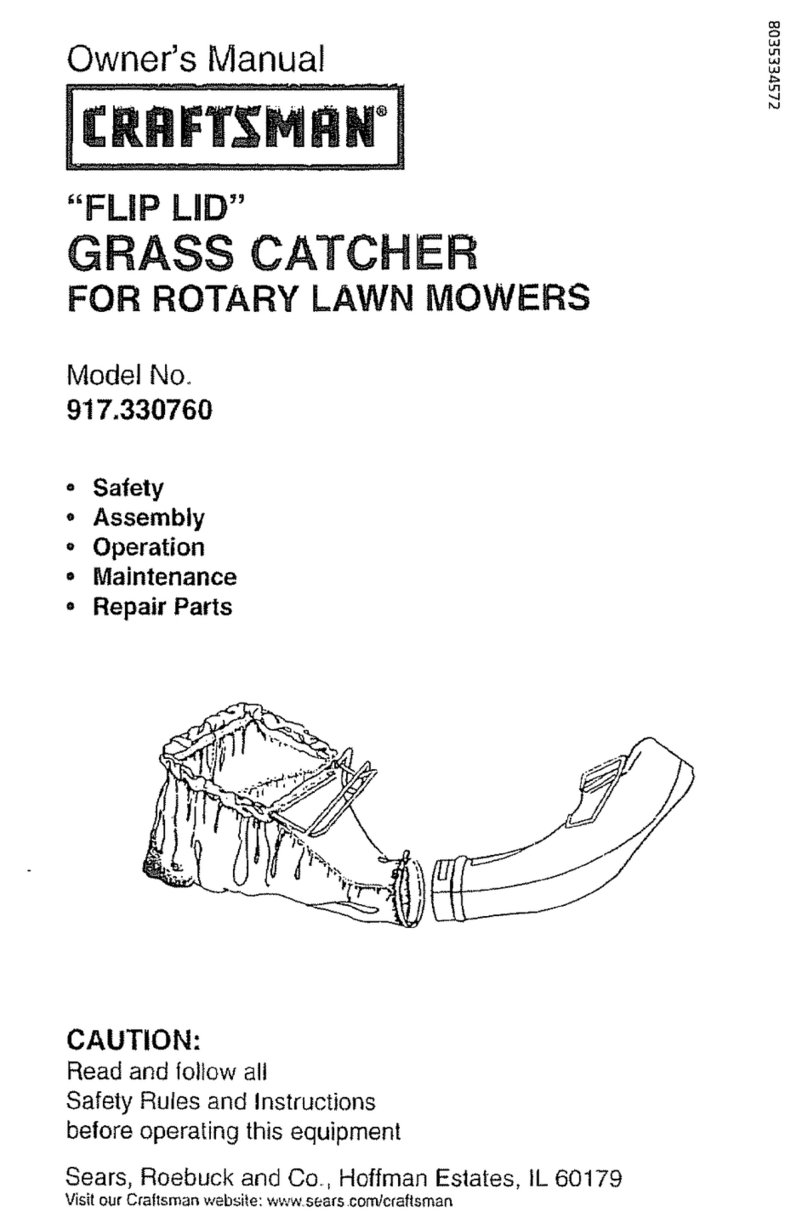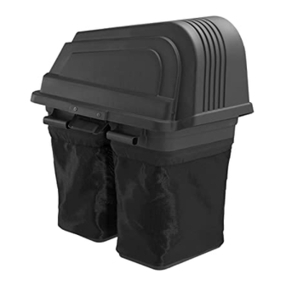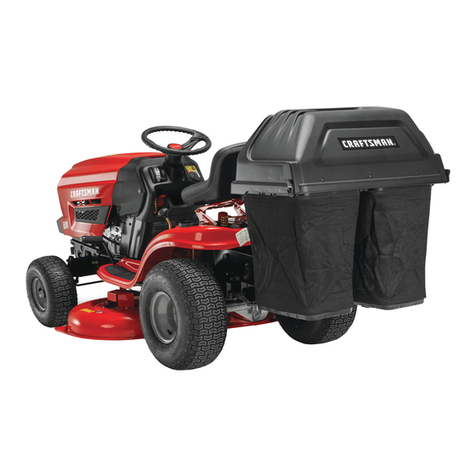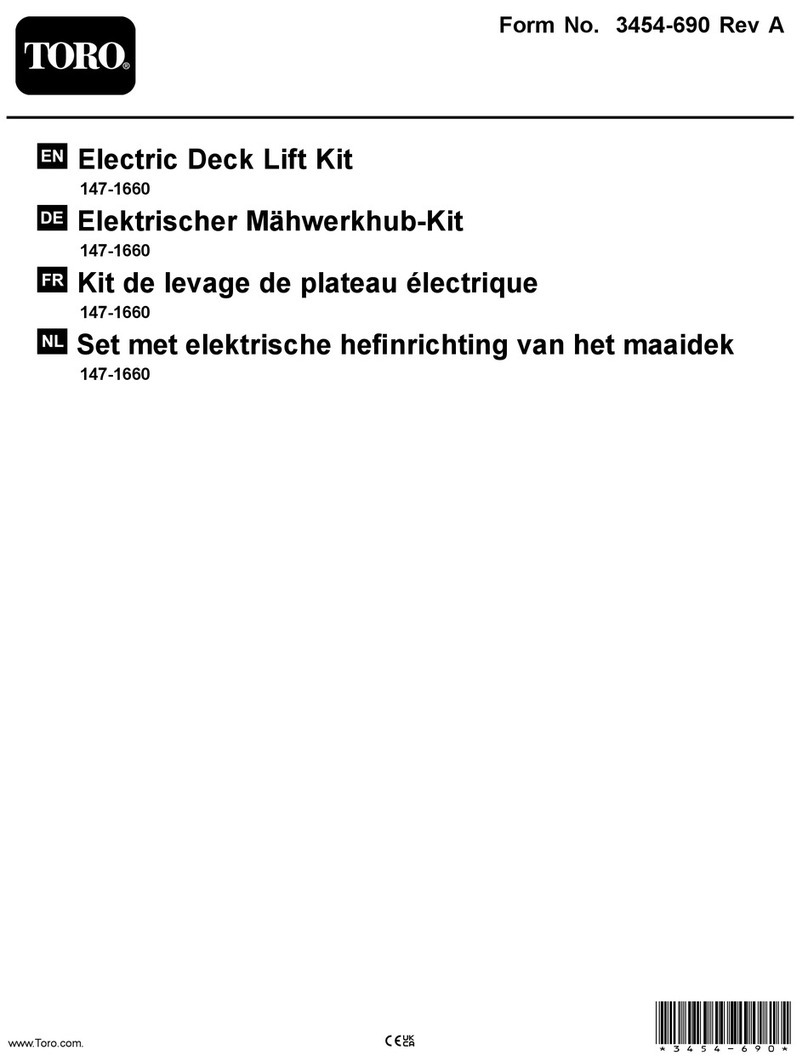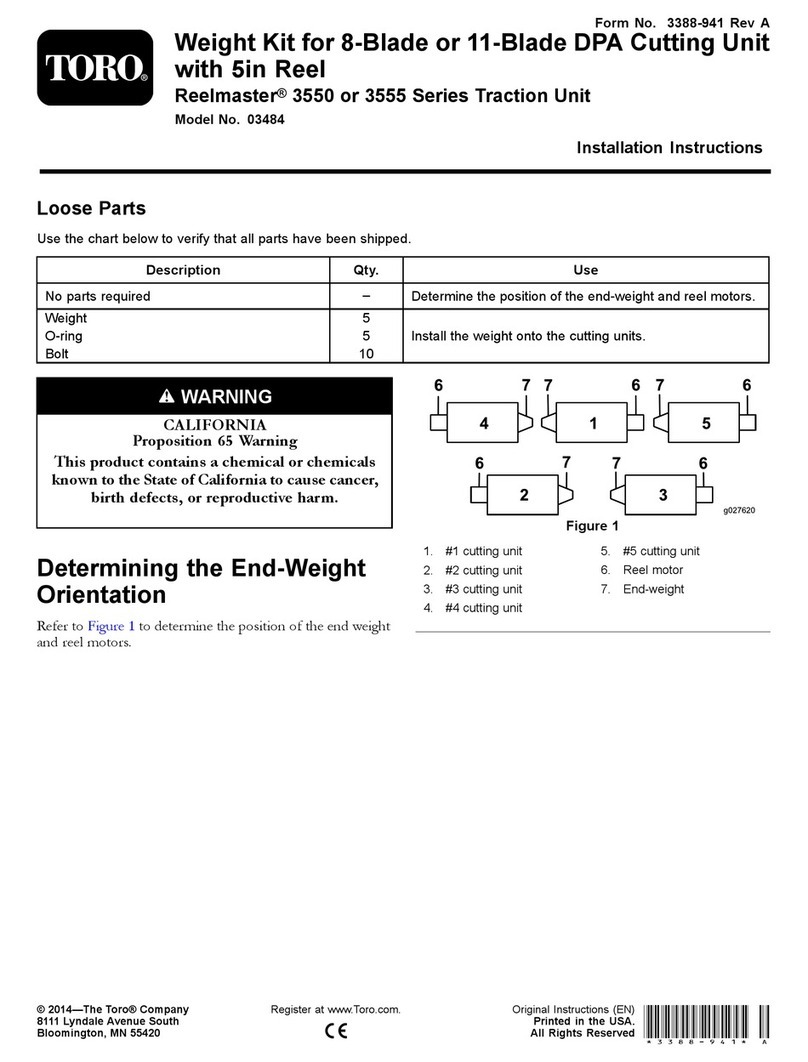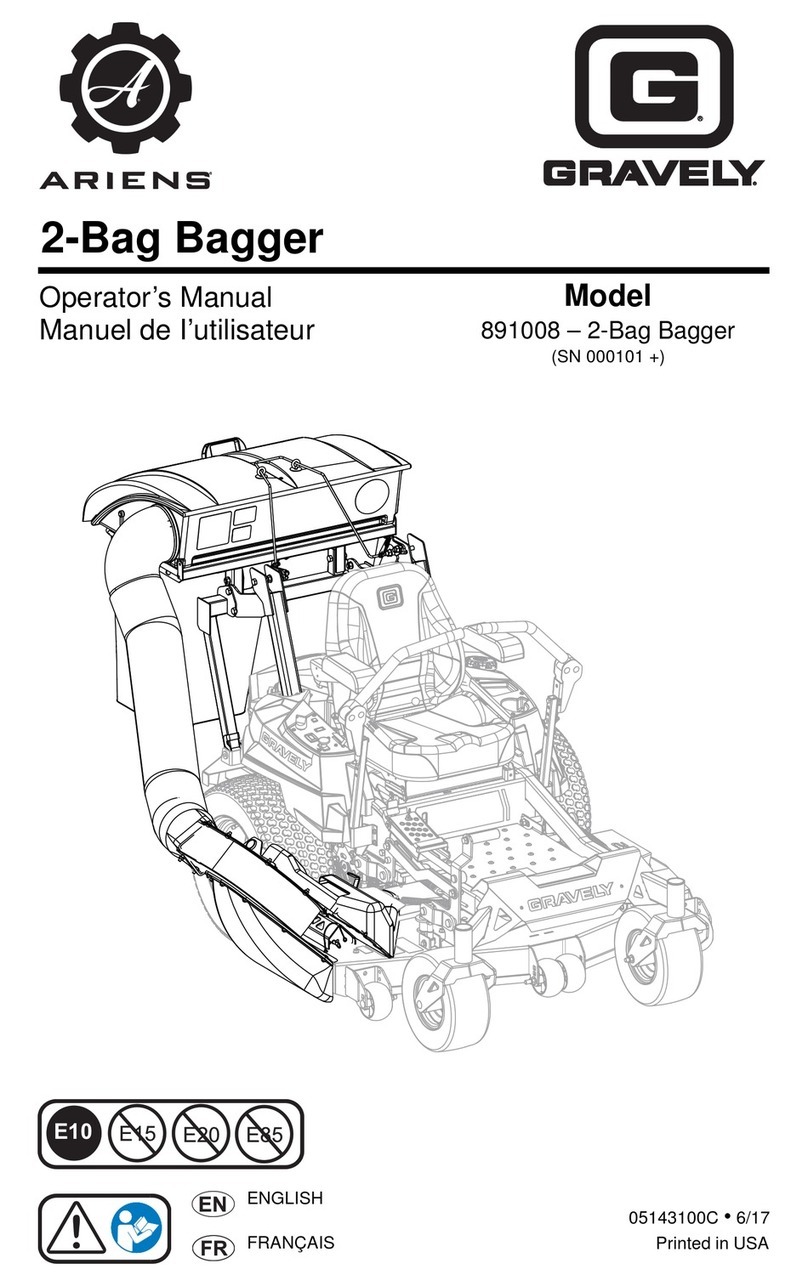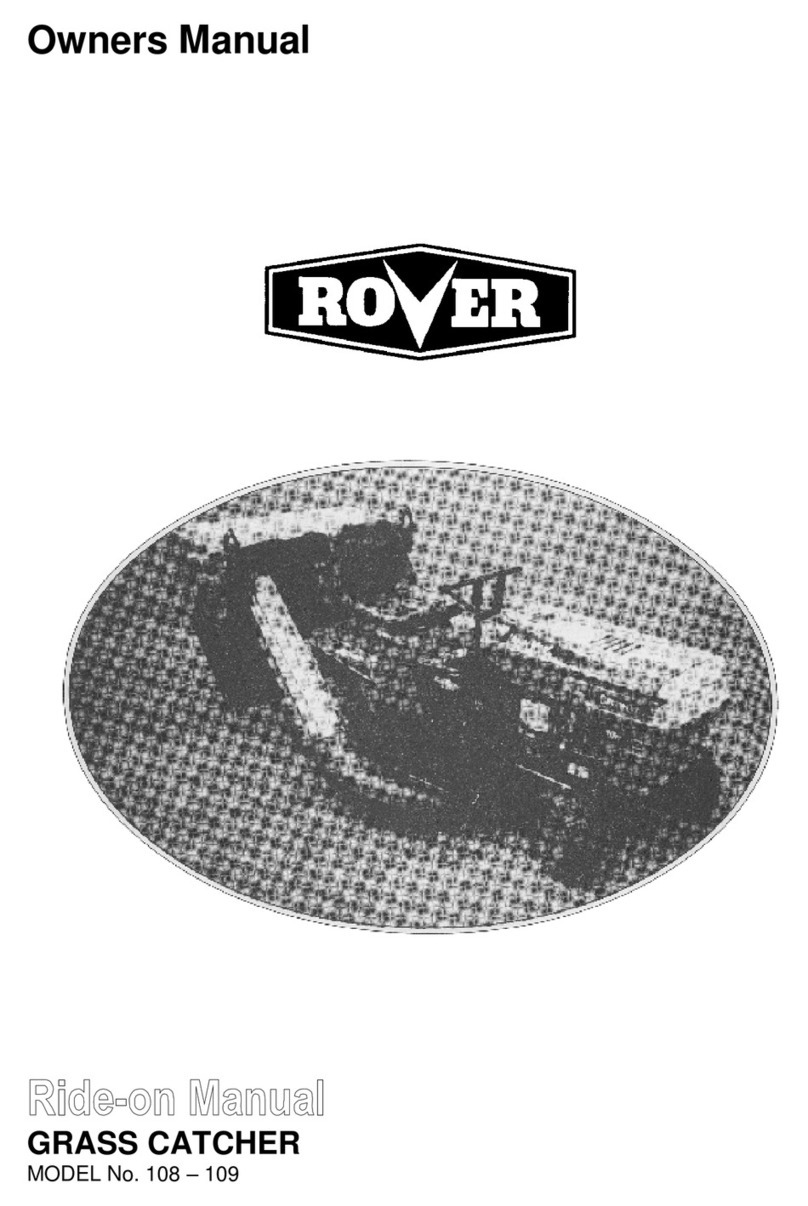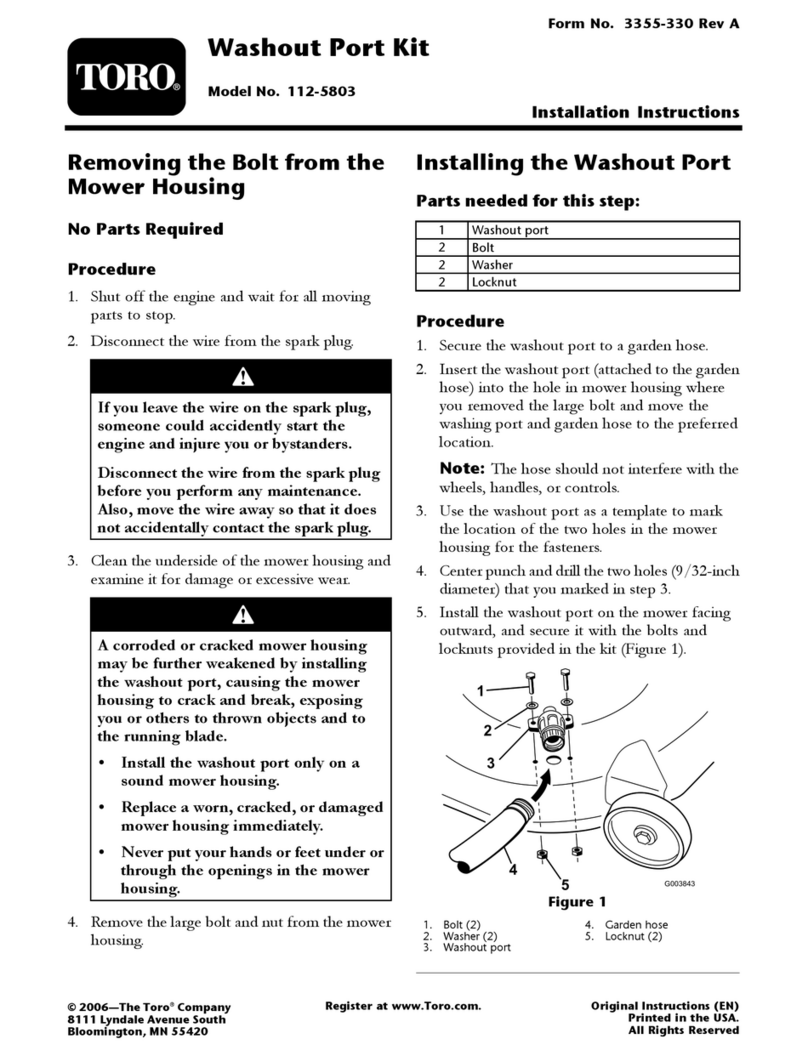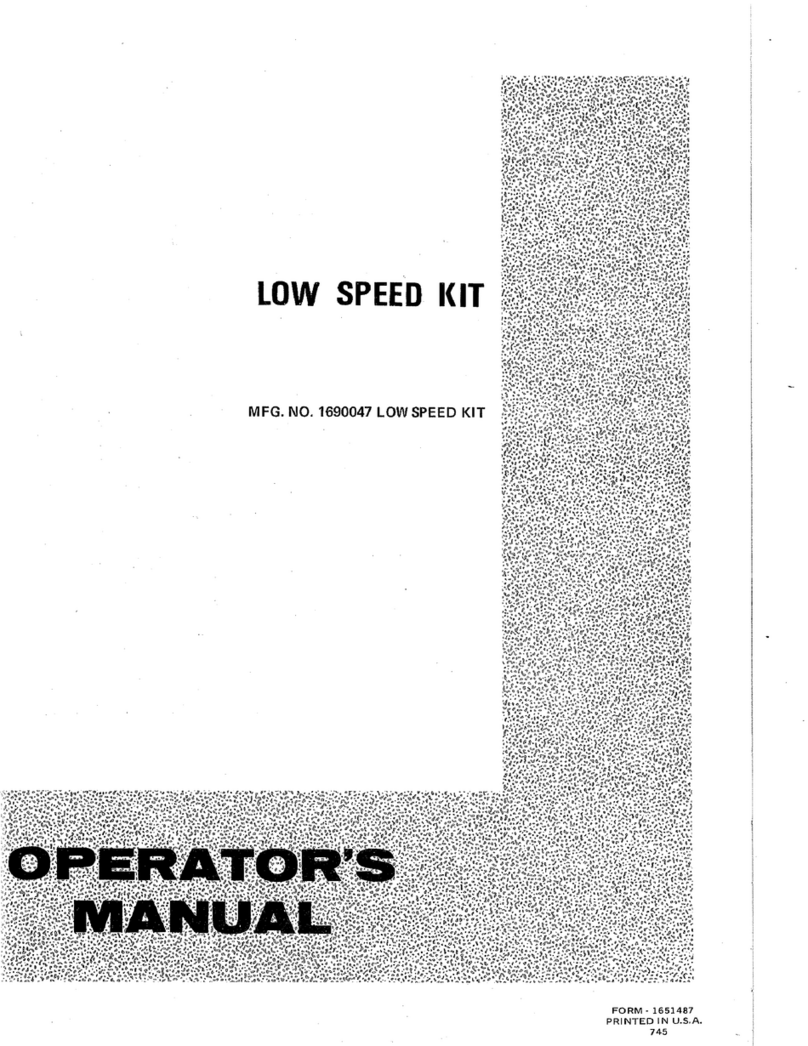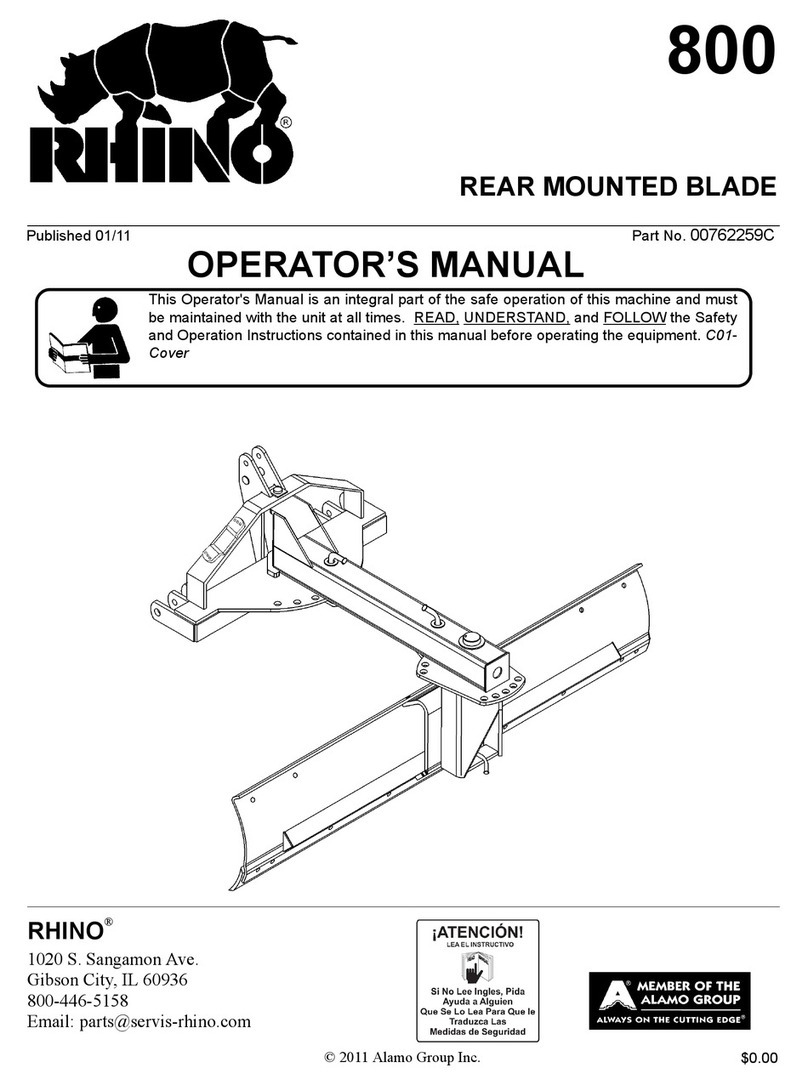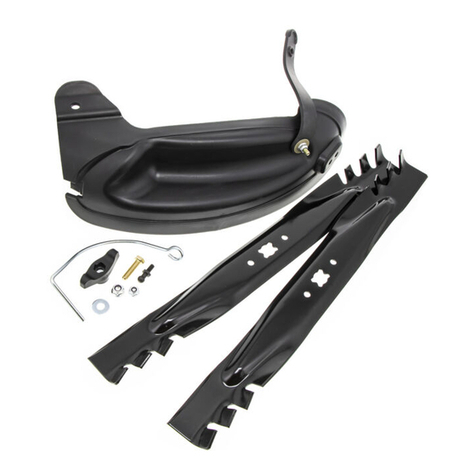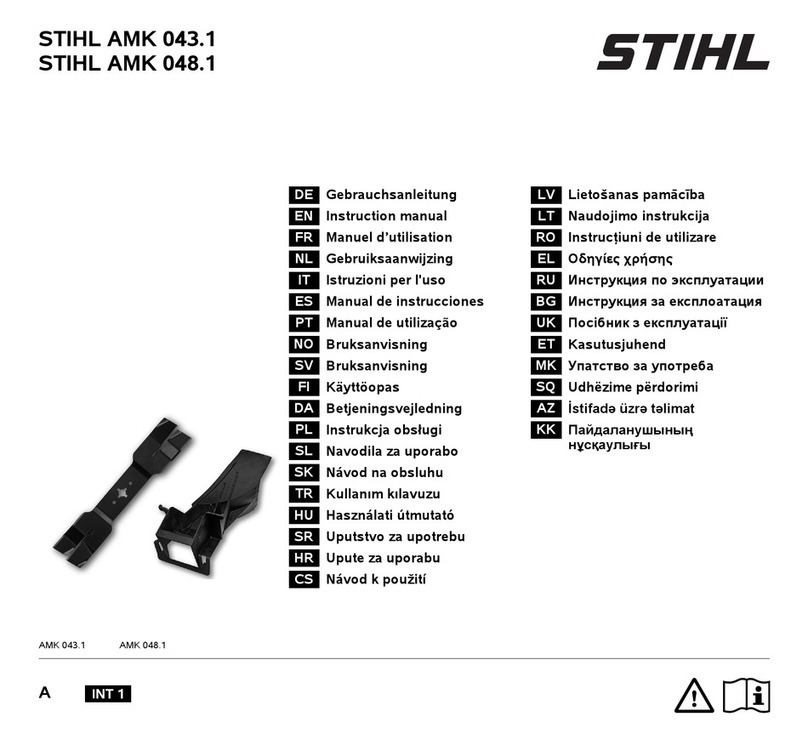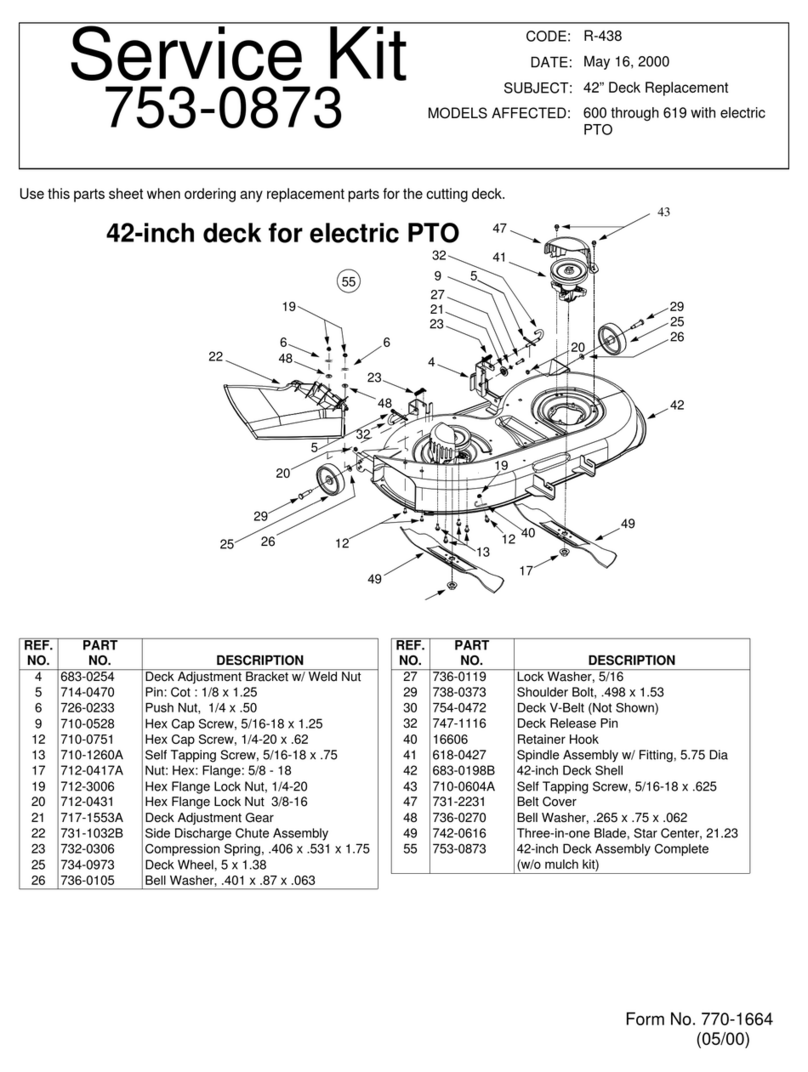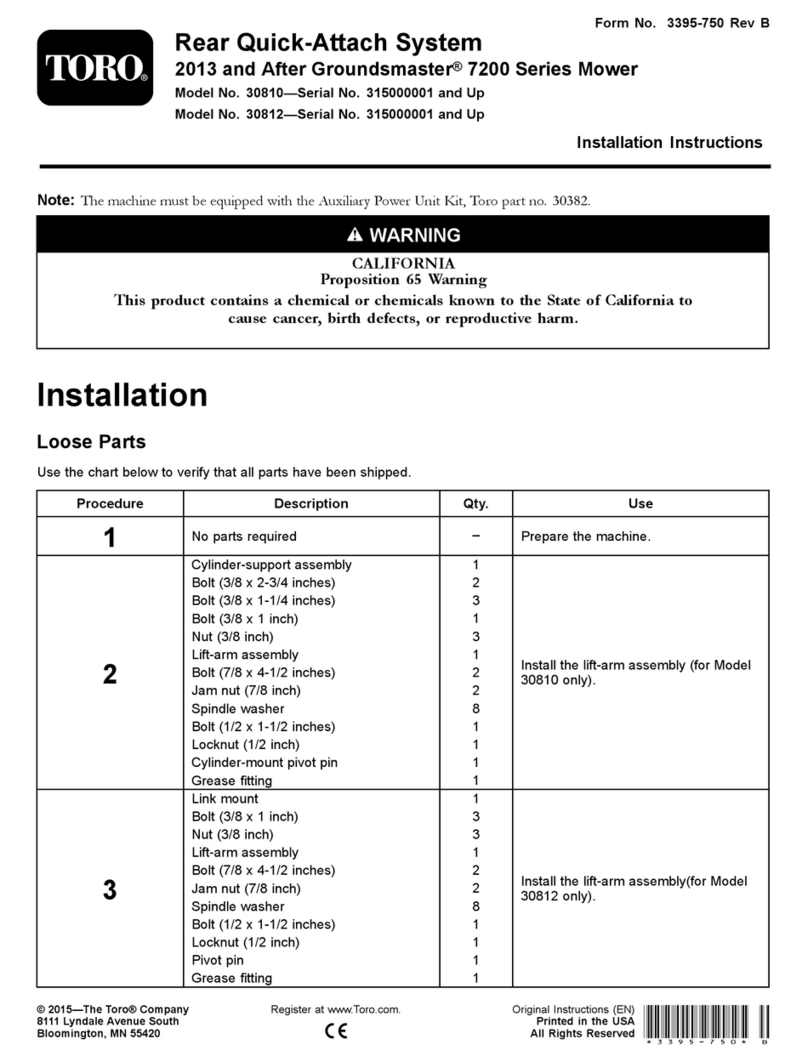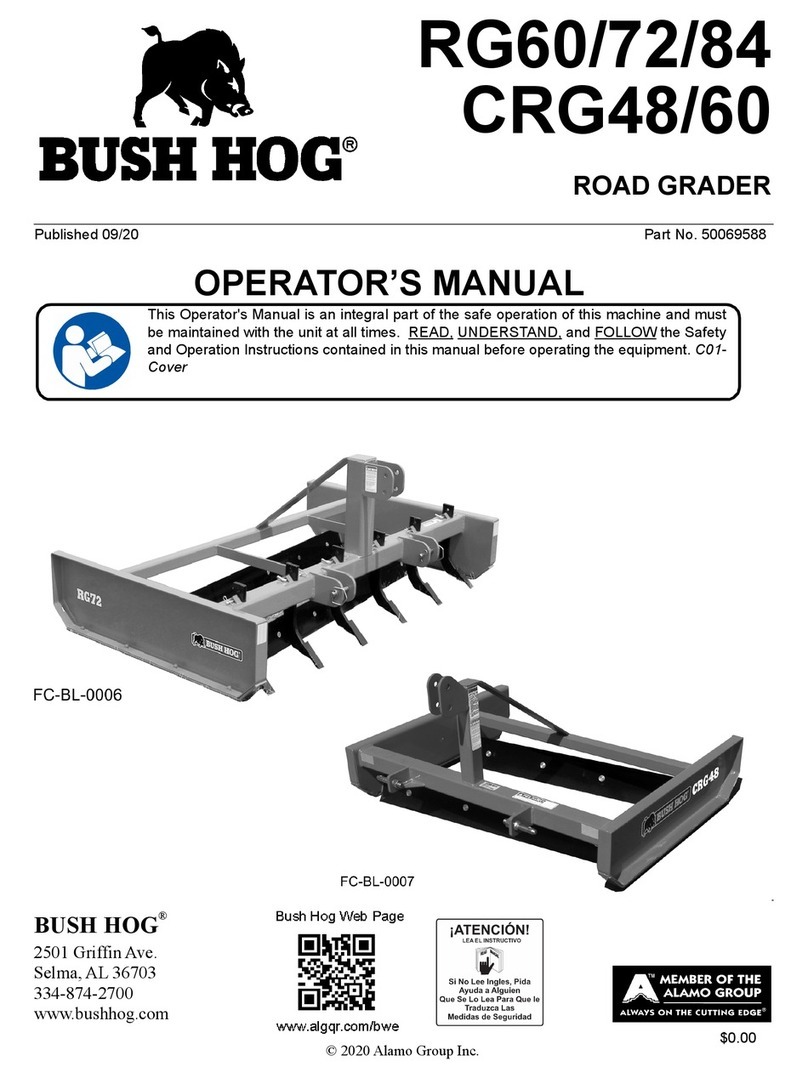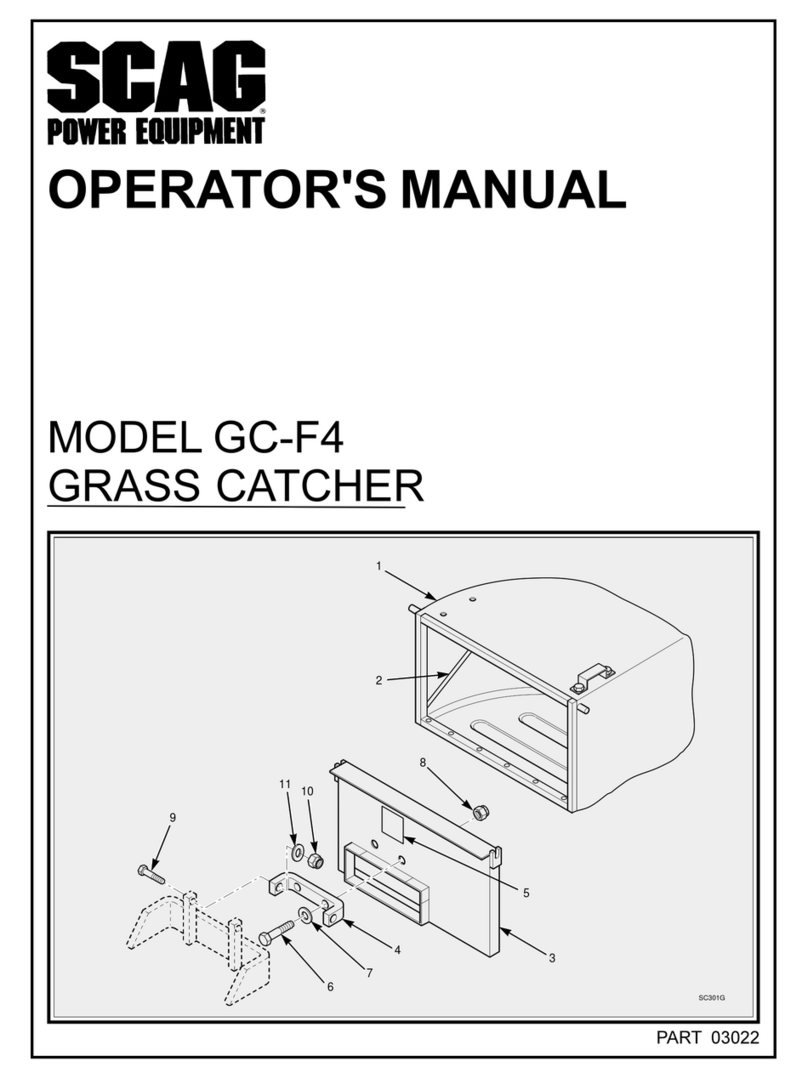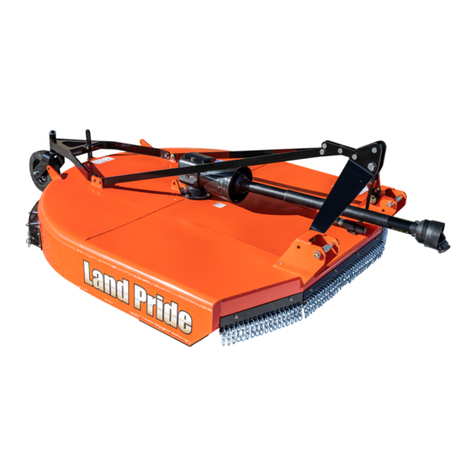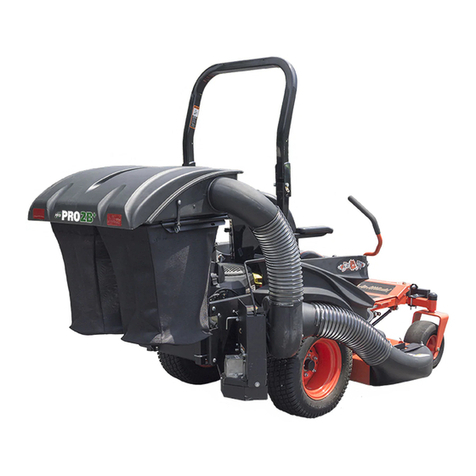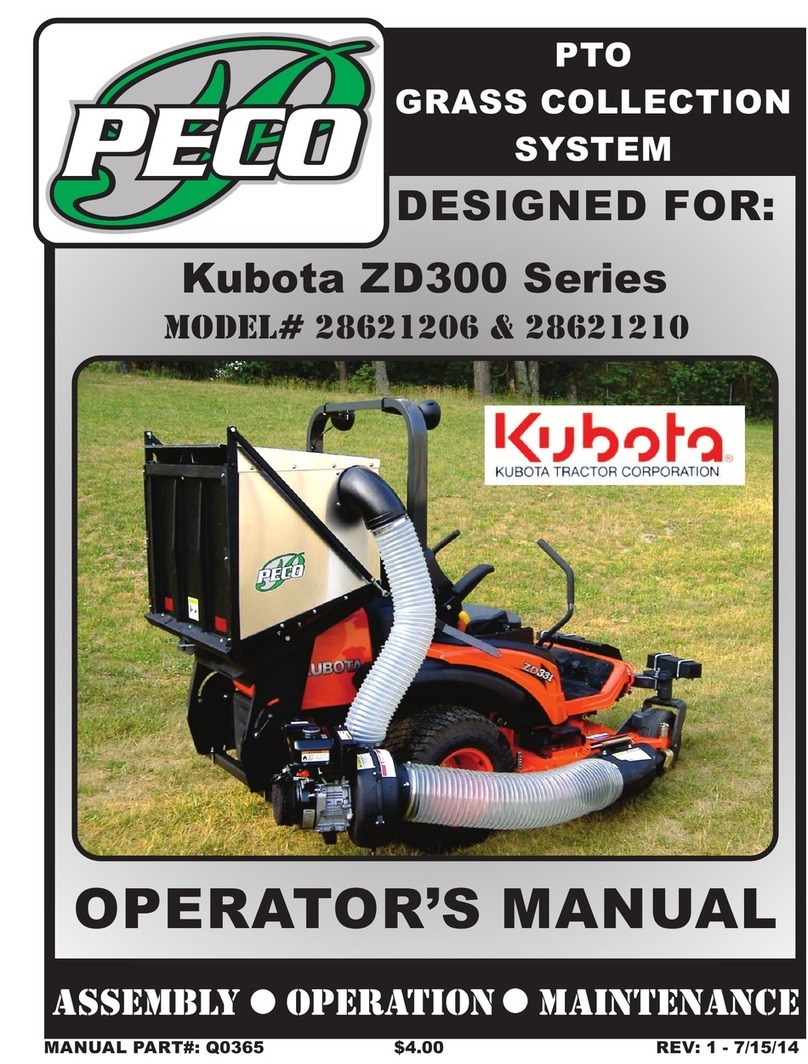SAFETY RULES A
Safe Operation Practices for Ride-On Mowers m:_
IMPORTANT: THIS CUTTING MACHINE IS CAPABLE OF AMPUTATING HANDS AND FEET AND THROWING OBJECTS.
FAILURE TO OBSERVE THE FOLLOWING SAFETY INSTRUCTIONS COULD RESULT IN SERIOUS INJURY OR DEATH.
I. GENERAL OPERATION
•Read, understand, and follow all instructions in the manual
and on the machine before starting.
Only allow responsible adults, who are familiar with the
instructions, to operate the machine.
Clear the area ofobjects such as rocks,toys, wire, etc., which
could be picked up and thrown by the blade.
Be surethe area isclear ofother people before mowing, Stop
machine if anyone enters the area.
Never carw passengers.
•Do notmow in reverse unless absolutely necessary. Always
look down and behind before and while backing.
Be aware ofthe mower discharge direction and do not point
it at anyone. Do not operate the mower without either the
entire grass catcher or the guard in place.
•Slow down before tuming.
•Never leave a running machine unattended, Always tum off
blades, set parking brake, stop engine, and remove keys
before dismounting.
Turn off blades when not mowing.
• Stop engine before removing grass catcher or unclogging
chute.
Mow only in daylight or good artificial light.
Do not operate the machine while under the influence of
alcohol or drugs,
•Watch fortraffic when operating near or crossing roadways.
•Use extra care when loading or unloading the machine into
atrailer or truck.
Data indicates that operators, age 60 years and above, are
involved in a large percentage of riding mower-related
injuries. These operators should evaluate their ability to
operate the ridingmower safely enough to protectthemselves
and others from serious injun!.
Keep machine free of grass, leaves or other debris build-up
whichcan touch hot exhaust /engine parts and bum. Do not
allow the mower deck to plow leaves or other debris which
can cause build-up to occur. Clean any oil or fuel spillage
before operating or storing the machine. Allow machine to
cool before storage.
II. SLOPE OPERATION
Slopes are a major factor related to Ioss-of-contrel and tipover
accidents, which can result in severe injury or death. All slopes
require extra caution. Ifyou cannot back upthe slope orifyou feel
uneasy on it, do not mow it.
DO:
Mow up and down slopes, not across.
Remove obstacles such as rocks, tree limbs, etc.
Watch for holes, ruts, or bumps, Uneven terrain could
overturn the machine, Tail grass can hide obstacles.
Use slow speed. Choose a low gear so that you will not have
to stop or shift while on the slope.
Follow the manufacturer's recommendations for wheel
weights or counterweights to improve stability.
Use extra care with grass catchers or other attachments.
These can change the stability of the machine.
Keep all movement on the slopes slowand gradual. Do not
make sudden changes in speed or direction.
Avoid starting or stopping on a slope. If tires lose traction,
disengage the blades and proceed slowly straight down the
slope.
DO NOT:
Do not tum on slopes unless necessary, and then, turn
slowly and gradually downhill, if possible.
Do notmow near drop-offs, ditches, or embankments. The
mower could suddenly turn over if a wheel is over the edge
of acliff or ditch, or if an edge caves in.
Do not mow on wet grass. Reduced traction could cause
sliding.
Do not try to stabilize the machine by putting your foot on the
ground.
Do not use grass catcher on steep slopes.
III. CHILDREN
Tragic accidents can occur if the operator is not alert to the
presence ofchildren. Children are often attracted to the machine
and the mowing activity. Neverassume that children will remain
where you last saw them.
Keep children out ofthe mowing area and under the watchful
care of another responsible adult.
•Be alert and turn machine off if children enter the area.
Before and when backing, look behind and down for small
children.
Never carry children. They may fall off and be seriously
injured or interfere with safe machine operation.
•Never allow children to operate the machine.
Use extra care when approaching blind comers, shrubs,
frees, or other objects that may obscure vision.
IV. SERVICE
Use extra care in handling gasoline and other fuels. They
are flammable and vapors are explosive.
Use only an approved container.
Never remove gas cap or add fuel with the engine
running. Allow engine to cool before refueling. Do not
smoke.
Never refuel the machine indoors.
Never store the machine or fuel container inside where
there is an open flame, such as a water heater.
Never run a machine inside a closed area.
Keep nuts and bolts, especially blade attachment bolts, tight
and keep equipment in good condition.
Never tamper with safety devices. Check their proper
operation regularly.
Keep machine free ofgrass, leaves, or other debris build-up.
Clean oil or fuel spillage. Allow machine to cool before
storing.
Stop and inspect the equipment if you strike an object.
Repair, if necessary, before restarting.
Never make adjustments or repairs with the engine running.
Grass catcher components are subject to wear, damage,
and deterioration, which could expose moving parts or allow
objects to be thrown. Frequently check components and
replace with manufacturer's recommended pads, when
necessary.
Mower blades are sharp and can cut. Wrap the blade(s) or
wear gloves, and use extra caution when senlicing them.
Check brake operation frequently. Adjust and service as
required.
2
